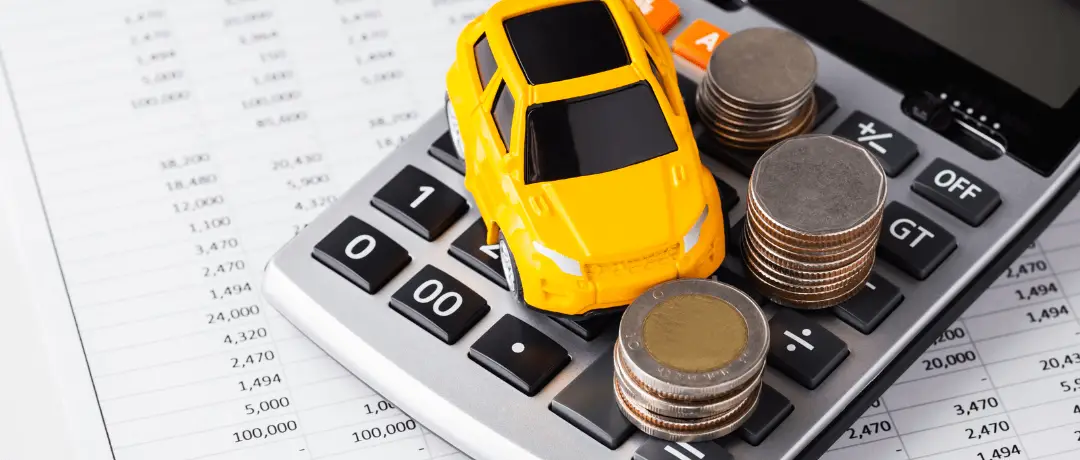Our experts answer your questions with a smile
Monday to Friday 9am - 12.30pm - 2pm - 7pm
Depreciation: what is it?
Limit on the purchase price excluding the deduction of depreciation or rental income :
| > 155g/km | > 60 g/km et < 155 g/km | > 20 g/km et < 60 g/km | < 20 g/km |
|---|---|---|---|
< 9 900€ | < 18 300€ | < 20 300 € | < 30 000 € |
Calculate non-deductible depreciation (NDA)
When a company acquires a electric vehicle, It is depreciated and included in the balance sheet under fixed assets.For an electric car lessee in LLDIn the case of a leased vehicle, the NDA is calculated on the basis of the depreciation period used by the lessor. The difference between the financial value of the vehicle and the non-deductible depreciation ceiling is divided by the depreciation period.
Read also : Everything you need to know about long-term leasing for electric cars
The financial value is obtained by adding to the catalogue price (after deduction of any discount) any optional equipment or accessories, the cost of transport and the cost of making the vehicle available.
- AND = (financial value of the vehicle - non-deductible depreciation ceiling) / depreciation period of the vehicle
- Financial value = catalogue price of the vehicle + availability + options/accessories + transport costs - discount granted.
- Cars and light commercial vehicles must be depreciated on a straight-line basis over 4 or 5 years (i.e. a depreciation rate of 25 or 20 % per year).
What you need to know about the depreciation rate
As for the annual depreciation rate, it is 20 % or 25 %Depreciation must be straight-line over 4 or 5 years, depending on the lessor.
For companies and professionals subject to VAT, all the tax applied to the leasing of commercial vehicles is recoverable for the entire term of the contract. This provision does not apply to passenger cars.Fuel is also eligible for VAT recovery, at 100 % for diesel, LPG, CNG and electric cars, but not for petrol.
An employee (whether a manager or not) also has the choice of opting to deduct actual business expenses for a given tax year. In the case of a business vehicle, the rent is not tax-deductible, but usage and maintenance charges are subject to conditions.
Accounting benefits of electric vehicles
For some years now, the French government has been encouraging companies to use 'clean' vehicles. With this in mind, it created two ceilings for non-deductible depreciation based on the CO2 emission rate of vehicles (this measure excludes commercial vehicles, which are fully depreciable).
This tax measure is designed to encourage low-polluting vehicles and penalise those that pollute the most. These ceilings can have a significant impact on the amount of the bonus/malus and the amount of the tax. tax on the use of private cars for commercial purposeseconomic purposes.
As part of this drive to encourage French companies to drive cleanly, hybrid and electric vehicles are being given priority in thetax on the use of passenger vehicles toeconomic purposes. This tax is payable on 30 November each year by any company whose registered office or place of business is in France and which owns or uses a vehicle fleet. The progressive scale is determined according to the CO2 emissions of each vehicle. Under the 2015 rules, electric vehicles are fully exempt. Hybrid vehicles whose CO2 emissions do not exceed 110g/km are exempt for 8 quarters.
For other types of vehicle, the rate of tax applicable in 2015 per gram of CO2 emitted varies from €0 (up to 50 g/km) to €27 (above 250 g/km.) In addition to this amount, since October 2014 there has been a surcharge targeting older vehicles or those with diesel engines, which are more polluting. Overall, for CO2 emissions of less than 50 g/km, the minimum oftax on the use of private cars for commercial purposeseconomic purposesincreases to €20 for a recent vehicle running on petrol.
The terms of the bonus and ecologic malus
In 2022, only electric vehicles will be eligible for the bonus, while existing internal combustion vehicles with high emissions will be subject to a penalty. The environmental bonus maximum of €4,000 up to a limit of 27 % of the price of the vehicleFrom 1 January 2023, it will be capped at €3,000. It will also be reduced from €2,000 to €1,000 for electric cars, and from €47,000 to €60,000.
The penalty applies to from 131 grams of CO2 per kilometre (€150) and rises to €8,000 above 200 g/km of CO2.
In the case of long-term leasing, a minimum period of 24 months is required to be eligible for the bonus, otherwise it must be returned.
For more information, we've put together a guide to this topic to explore the different aspects in depth:
Read our article about :

































